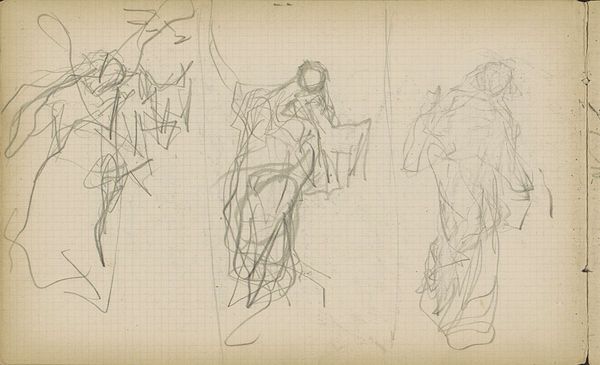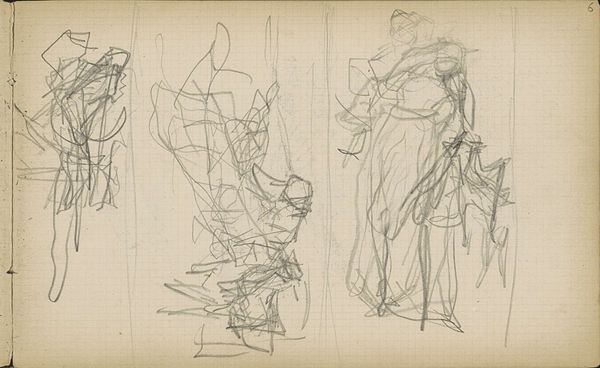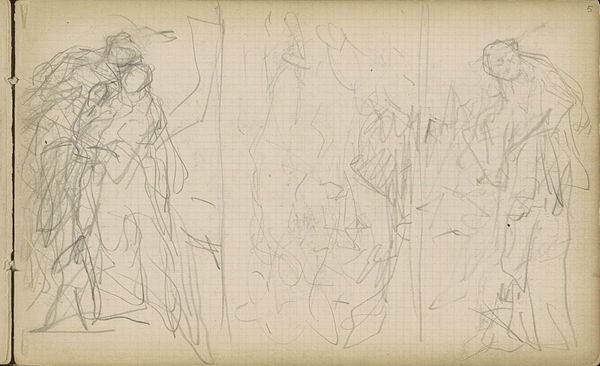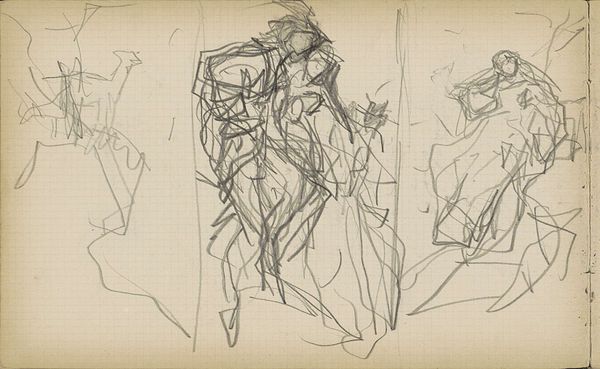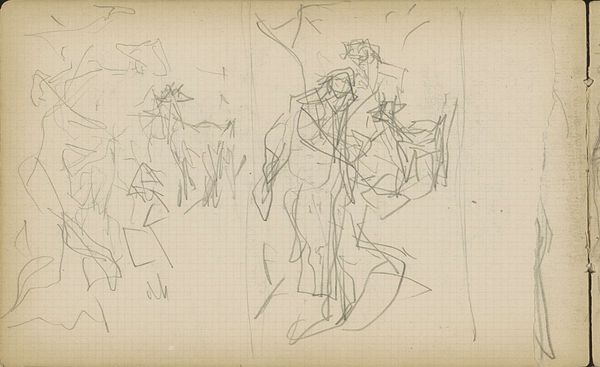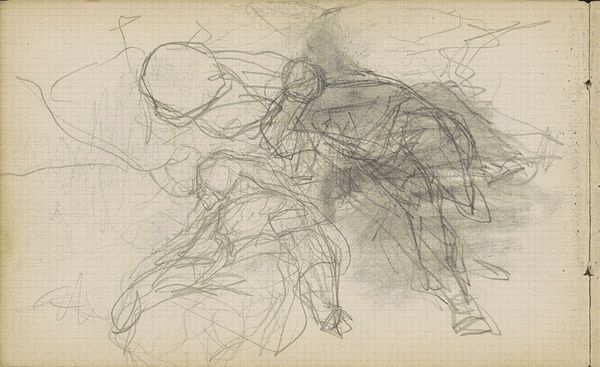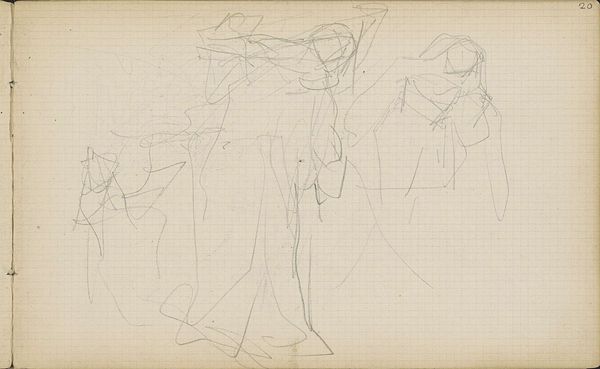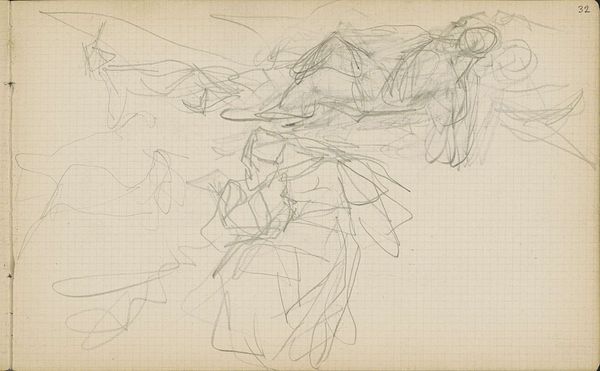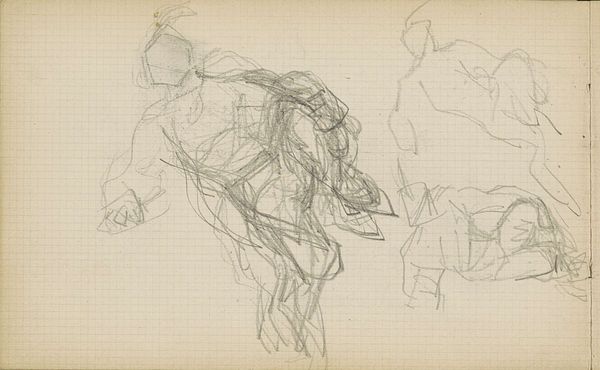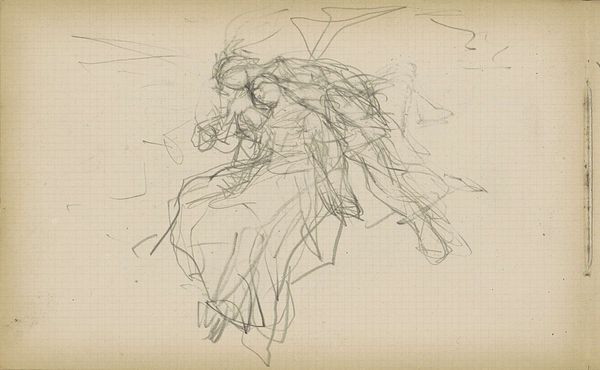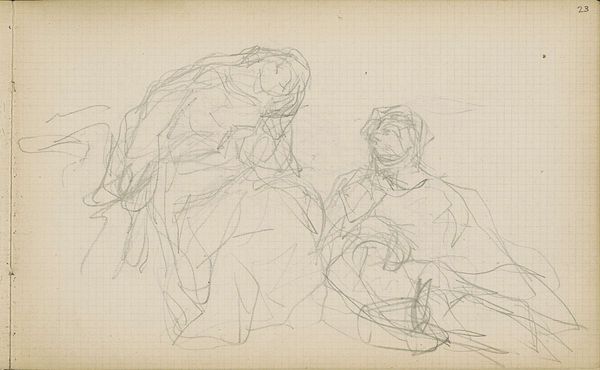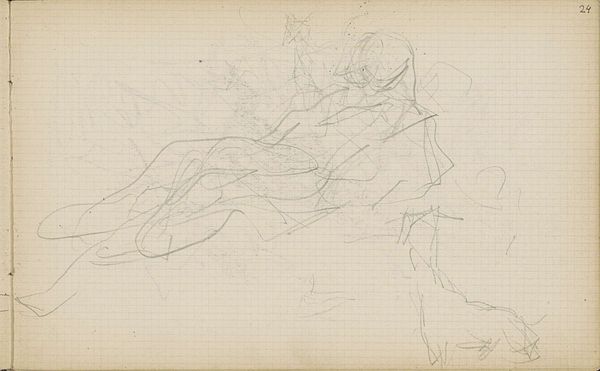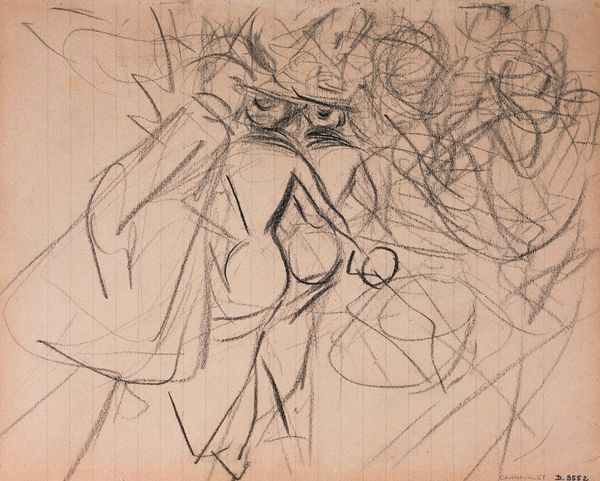
drawing, paper, pencil
#
drawing
#
impressionism
#
figuration
#
paper
#
pencil
#
academic-art
Copyright: Rijks Museum: Open Domain
Curator: Welcome. Let's examine this fascinating work, “Figuurstudies,” by Matthijs Maris. The dates attributed to this drawing span from 1849 to 1917, offering a wide interpretive lens given Maris's artistic trajectory during this period. The medium is pencil on paper. Editor: Immediately, there's something raw and ephemeral about it. These fleeting figures, caught in gestural lines—they almost seem to be dissolving into the page. The artist truly focuses on posture in time. Curator: Maris was indeed preoccupied with capturing fleeting moments, a trait common in Impressionist works, although he himself remained something of an elusive figure within that movement. Academic art's principles of anatomy and form intertwine here with Maris’ personal sense of visual rendering. We might ask, what's being studied? Editor: It appears he is capturing working-class individuals, perhaps women given their presumed garments. It suggests observation of social class through their pose. Maris may be recording these individuals to render their existence. Who were they? Curator: These are, more than likely, sketches of figures as preparatory studies. Artists often relied on this kind of documentation, either using the notes later for large works or keeping the studies as independent pieces in and of themselves. The location is a reminder of access and ownership of work like this, too, situated in a museum now. Editor: That location confers status and visibility upon the forgotten laborers from which Maris seemed to make his drawing, so there’s an intersectional tension there—who has their legacy highlighted? In our view, “Figuurstudies” isn’t simply a display of a human likeness, but also speaks volumes on identity and social standing. Curator: This particular piece is quite evocative due to its seemingly unfinished, gestural lines. The minimal use of the pencil amplifies the sentiment of loss, of remembrance. I'm not sure if I agree, precisely, that Maris intended necessarily any kind of political or social message, but I appreciate the sensitivity this unlocks for your interpretations. Editor: I find that interpretations from diverse points of views—those not from traditionally “Art History” or white Euro-centric frames—add richer dimensions and new insights that bring these objects back into collective dialogue in a useful and inclusive way. Curator: Indeed, diverse interpretative perspectives provide renewed vitality to our shared artistic patrimony and open artworks for wider viewing possibilities, and richer socio-political understanding of image creation and access. Editor: Precisely.
Comments
No comments
Be the first to comment and join the conversation on the ultimate creative platform.
